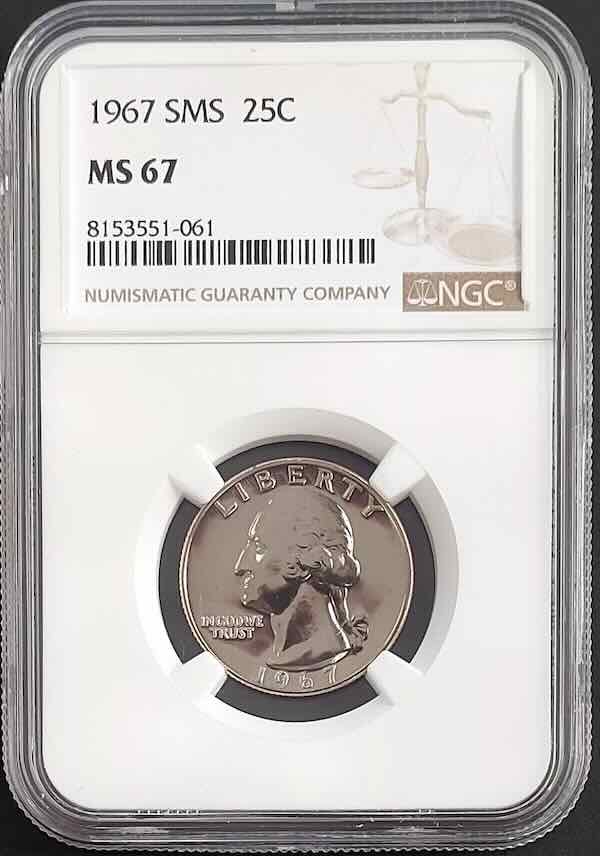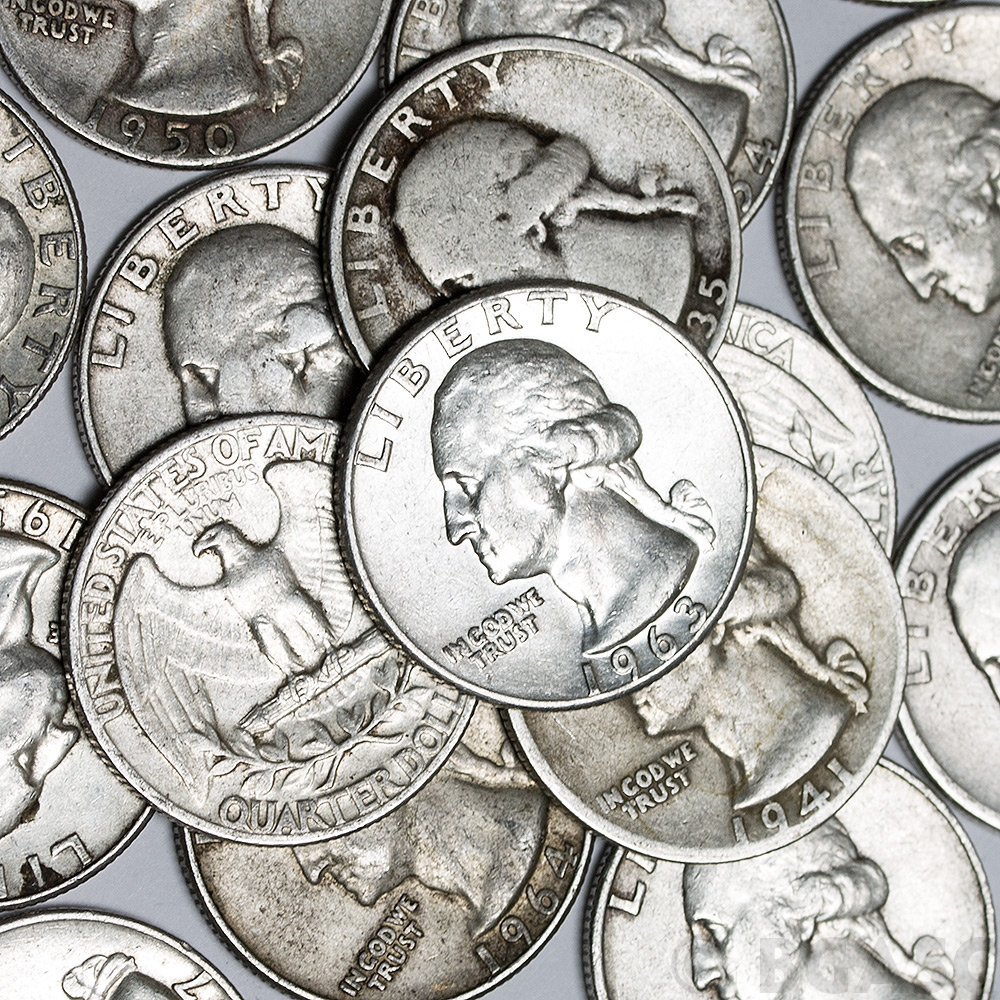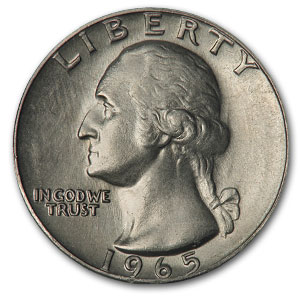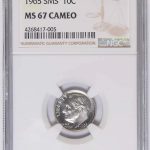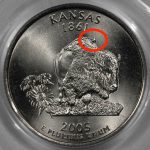Following the historic Coinage Act of 1965, the United States Mint was amid significant changes that marked the end of silver in circulating quarters, shifting to the copper-nickel-clad composition resulting from the coin shortage and soaring silver prices. As a result, the 1966 Washington Quarter became a landmark coin, symbolic of the nation’s transition from precious metal currency to base metal coinage.
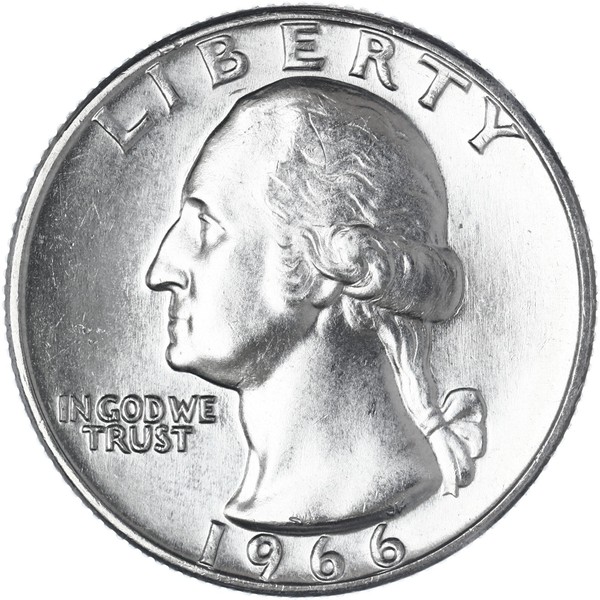
Key Highlights
- 1966 Quarters were the second to be minted entirely in copper-nickel clad, with no silver content.
- These coins lack mint marks due to intentional Mint policies designed to deter collectors from hoarding.
- 1966 features notable varieties and error quarters that can be significantly valuable.
- Special Mint Set (SMS) Quarters were produced in limited numbers, presenting an attractive collectible opportunity.
Transition from Silver to Clad Coinage
Skyrocketing commodities prices in the early 1960s prompted the government to remove 90% silver from quarters and dimes entirely after 1964. Quarters produced from 1965 onwards were made from a copper core sandwiched between layers of copper-nickel alloy, commonly referred to as “clad” coinage, to reduce production costs.
The removal of mint marks between 1965 and 1967 was another specific decision aimed at curbing coin hoarding and speculation.
1966 Quarter Mintage
All 1966 quarters were minted without mint marks. Although the coins were produced at multiple facilities, exact numbers by specific mint are unknown due to intentional Mint secrecy during these years.
Mintage of 1966 Quarters
| Mint Location | Type | Mintage |
|---|---|---|
| All Mints Combined | Circulation Strike | 821,101,500 |
| Special Mint Set (SMS) | 2,261,583 |
Despite the large production number, the SMS quarters are comparatively limited, driving collector interest and slightly higher values.
1966 Quarter Error
Error coins from 1966 hold particular intrigue and value for collectors. Commonly collected errors include off-center strikes, doubled dies, clipped planchets, and transitional metal errors (rarely found, but highly valuable).
Common 1966 Quarter Errors and Prices
| Error Type | Condition | Value | Source |
|---|---|---|---|
| Double Die Reverse (DDR) | XF45 | $920 | Heritage Auctions |
| Off-Center Strike (15%) | MS64 | $225 | eBay Auction |
| Clipped Planchet | MS66 | $125 | eBay Auction |
| Struck on Nickel Planchet | AU55 | $450 | eBay Auction |
| Broadstrike Error | AU55 | $125 | Robinson’s Coin Town |
These error coins continue to be highly sought after for their uniqueness and scarcity.
1966 No Mint Mark Quarter
The absence of mint marks on the 1966 Washington Quarter was an intentional decision by the Mint. In the midst of a coin shortage, Mint officials removed mint marks from all circulating coins from 1965 to 1967, aiming to prevent collectors from hoarding coins from specific mints.
Additionally, the enormous mintage of 821 million coins reflects an aggressive Mint strategy to relieve the coin shortage. As a result, 1966 quarters are very common in circulated grades, and collectors typically pursue high-grade uncirculated examples or coins from Special Mint Sets (SMS).
NGC & PCGS Graded 1966 Quarter Values
Circulated 1966 quarters carry little premium above face value due to high availability. However, collectors and investors seek graded coins for their conditional rarity.
Coins graded from MS60 to MS65 are relatively common and affordable, typically valued between $5 to $35. The value increases significantly for higher grades due to fewer examples graded MS66 or MS67.
1966 Quarter Graded Coin Values (Recent Auctions)
| Grade | Grading Service | Value |
|---|---|---|
| MS63 | NGC & PCGS | $3 to $20 |
| MS64 | NGC | $10 to $25 |
| MS65 | PCGS | $20 to $35 |
| MS66 | NGC | $30 to $40 |
| MS67 | PCGS | $40 to $60 |
Top-tier MS67 graded quarters are considered significant condition rarities, thus driving premiums exponentially higher.
Collector’s Notes
Given its historical significance as a transitional issue from 90% silver coins to clad coinage, a 1966 Quarter is essential for those assembling comprehensive type sets of U.S. numismatic history.
Error coin enthusiasts should closely monitor examples from 1966 due to notable mint errors such as doubled dies, off-center strikes, and coins struck on incorrect planchets. These error coins offer excitement and potential value appreciation due to their scarcity and uniqueness.
Collectors who prioritize high-grade condition coins should consider seeking out Special Mint Set (SMS) examples or targeting pieces graded MS66 or MS67 by PCGS or NGC. Though these higher grades carry a premium, their relative scarcity makes them worthwhile acquisitions with promising long-term potential.
FindBullionPrices.com can help you compare online dealer prices for Washington silver quarters:
